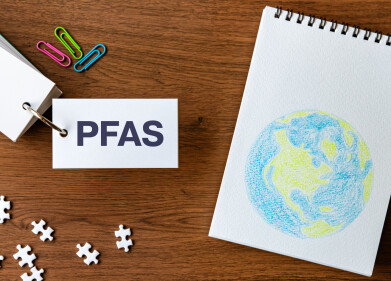HPLC, UHPLC
Chromatography Assesses New York's Antidepressant Drug Use
Jun 25 2019
Knowing the true scale of drug use is an important part when setting any drug policy - whether you want to know about prescription drug use or illegal drugs. Traditionally, the methods used to monitor drug use would include user questionnaires, monitoring the number of prescriptions issued or finding out how many people have been arrested for drug offences.
But, these methods can produce inaccurate results - as in general people are not always truthful when it comes to admitting their drug use and we don’t always follow doctor’s orders. One method that has been used in recent years to try and overcome these problems is wastewater epidemiology. A recent study published online has used the method to investigate the use of antidepressant and anxiety drugs in one of the begets cities on earth. Can chromatography see how depressed New York City is?
The answer is in the sewers
Wastewater epidemiology is a relatively new method for determining human consumption. The basis of the analysis is found not in what we consume, but in what we excrete. Samples of wastewater are taken and analysed for biomarkers (in this case human metabolic excretion products) that can be used as indicators of what the human population has consumed, often in real-time.
The beginnings of the methodology are found in analysis of wastewater for illegal drug use - but nowadays use of health products, food and drink and other biomarkers of human existence can be monitored. Samples are collected from sewers, usually from the pipes entering a sewage plant before treatment. Knowing the total volume of wastewater that flows through the sample pipe and the number of people connected to the pipe allows researchers to generate an accurate assessment for the consumption of those people.
Where are the drugs being taken?
Although prescription drugs like antidepressants and anxiety medicines are controlled, there is evidence that they are misused. Knowing the quantity of drugs entering the environment is useful, particularly if those medicines can have an environmental impact. A recent report states that in between 2004 and 2011 the amount of emergency department visits due to antidepressants increased by almost 50% - with an increase in New York City of almost 30%.
The preferred method of analysing wastewater samples for drugs is high performance liquid chromatography. Improving chromatographic analysis is the topic of the following article, Using Narrow Bore Columns to Enhance Sensitivity for LC-UV and LC-MS Analyses. A team performed HPLC analysis on 48 wastewater samples from NYC with a preference for antidepressants and anxiolytic drugs.
Interestingly, the team found that the number of positive results for antidepressant drugs increased before public holidays, whereas the positive results for anxiolytic drugs remained the same throughout the year. The researchers were able to pinpoint which areas of the city had higher antidepressant use and which antidepressants were taken. Combined with other medical data, this might allow public health officials to direct their efforts in a more focussed manner.
Events
Apr 22 2025 Kintex, South Korea
Analytica Anacon India & IndiaLabExpo
Apr 23 2025 Mumbai, India
Apr 27 2025 Portland, OR, USA
May 11 2025 Vienna, Austria
May 18 2025 Tempe. AZ, USA













